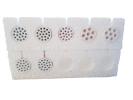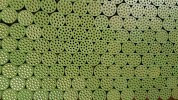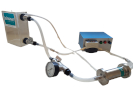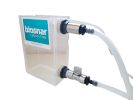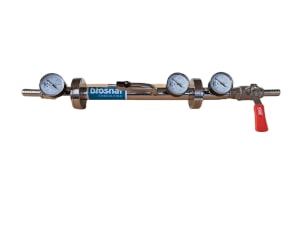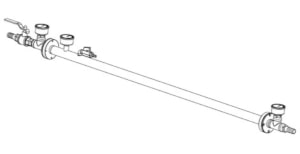LABORATORY EQUIPMENT AND FILTRATION KITS
We at Biosnar can help you with all the phases of the process:
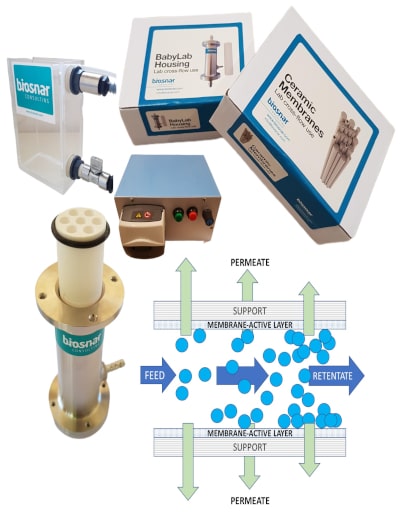
FILTRATION KITS
For qualitative tangential (non dead-end) filtration assays; selection of the optimal membrane for your process. Materials, geometry and pore size. These kits include everything required for small-volume qualitative filtration, with a basic membrane kit with a range of pore sizes. Contact us to find out more about the lab kits.
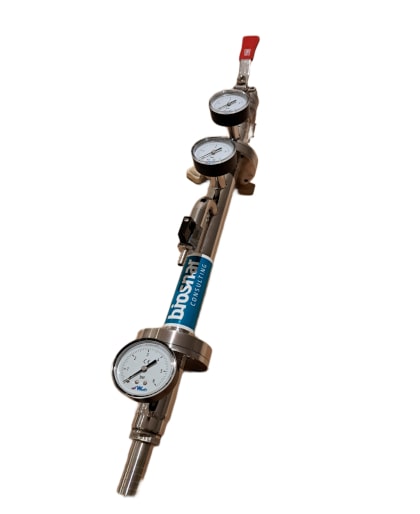
PILOT HOUSINGS
Membrane housings for pilots.
Complete module with valves and manometers.
Choose the best membrane for your process.
All you need for a cross-flow filtration pilot unit.
Contact us to find out more about the pilot housings.
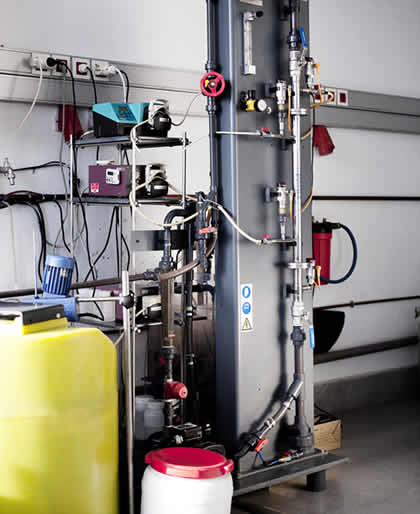
LABORATORY AND/OR PORTABLE PILOT PLANTS
We can design and supply small-sized equipment for laboratory piloting, with a permeate capacity of up to 50L/h. Apart from qualitative values, you can also obtain relevant information about the viability or scaling of your process. Contact us to find out more about the pilot laboratory plants.
- Filtration qualitative assays
- 0-10 L/h permeate
- Targeting the best membrane pore size
- Low velocity cross-flow filtration at lab-scale
- Minimum sample volumen required
- Ceramic membranas MF/UF/NF
- Continuous filtration without cake formation
- Any type of ceramic membranes can be used?
Tubular ceramic membranes, OD25, 100 mm length. - Available pore sizes?
MF/UF/NF, see our “MEMBRANE KITS”. - Max TMP to achieve?
1-1.5 bar/ 14-22 psi. - Max CFV to be used?
Low CFV recommended, although up to 4 m/s can be used. - Max temperature of the fluid?
95ºC/203ºF. - pH range?
The membrane will admit 1-14. Since the housing is made of SS, a strong rinse with water is recommended after highly corrosive conditions. - Max permeate flow?
This will depend on the fluid and the membrane pore size, ranging 0-10 L/h.
- Filtration qualitative assays for the BabyLab system
- Ceramic membranas OD25, 100 mm length
- Geometries, 6 or 19 channels (0.01-0.02 m2)
- Wide range of pore sizes
- MF: 0.8-0.4-0.2-0.1 µm
- UF: 300-150-100-25 kD
- NF: 15-8,5-5-2-1 kD
- Membrane materials?
Inorganic typically metal oxides Al2O3-TiO2-ZrO2. - Max TMP to achieve?
1-1.5 bar/ 14-22 psi. - Max CFV to be used?
Low CFV recommended, although up to 4 m/s can be used. - Max temperature of the fluid?
95ºC/203ºF. - pH range?
1-14. - Max permeate flow?
This will depend on the fluid and the membrane pore size, ranging 0-10 L/h.
- Filtration qualitative assays
- 0-10 L/h permeate
- Permeate quality representative at full-scale
- Selection of the best membrane pore size
- Low velocity cross-flow filtration at lab-scale
- Minimum sample volumen required
- Ceramic membranas MF/UF/NF
- Continuous filtration without cake formation
- Feeding/Concentration tank included
- Peristaltic pump OPTIONAL
- Silicon piping, connectors and full kit to setup a real cross-flow filtration and simulate multiple processes
- Any type of ceramic membranes can be used?
Tubular ceramic membranes, OD25, 100 mm length. - Available pore sizes?
MF/UF/NF, see our “MEMBRANE KITS”. - Max TMP to achieve?
1-1.5 bar/ 14-22 psi. - Max CFV to be used?
Low CFV recommended. - Max temperature of the fluid?
70ºC/158ºF. - pH range?
The membrane will admit 1-14. Since the housing is made of SS, a strong rinse with water is recommended after highly corrosive conditions. - Max permeate flow?
This will depend on the fluid and the membrane pore size, ranging 0-10 L/h. - Max affordable concentration rate in the feeding tank?
No limit other than the fluid viscosity so that the peristaltic pump can perform adequately.
- Qualitative assays and scale-up tests with pilot plant
- Real cross-flow conditions
- Plug&play, ¾”spigot connections
- Valves and manometers included
- Membrane length 305/1178 mm
- Which material is the housing made of?
SS-316L - Which is the max recommended pressure to work with?
6 bar/87 psi - Max permeate Flow to achieve?
This will depend on the fluid, housing/membrane length and pore size, ranging 0-50 L/h. - Membrane types that fit the device?
Ceramic membranas OD25, 305/1178mm length.



